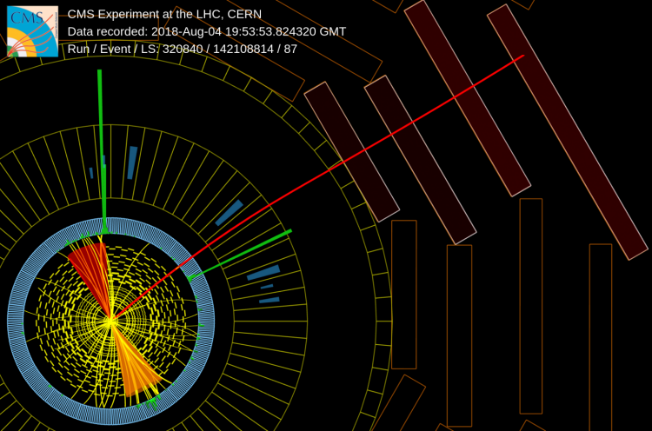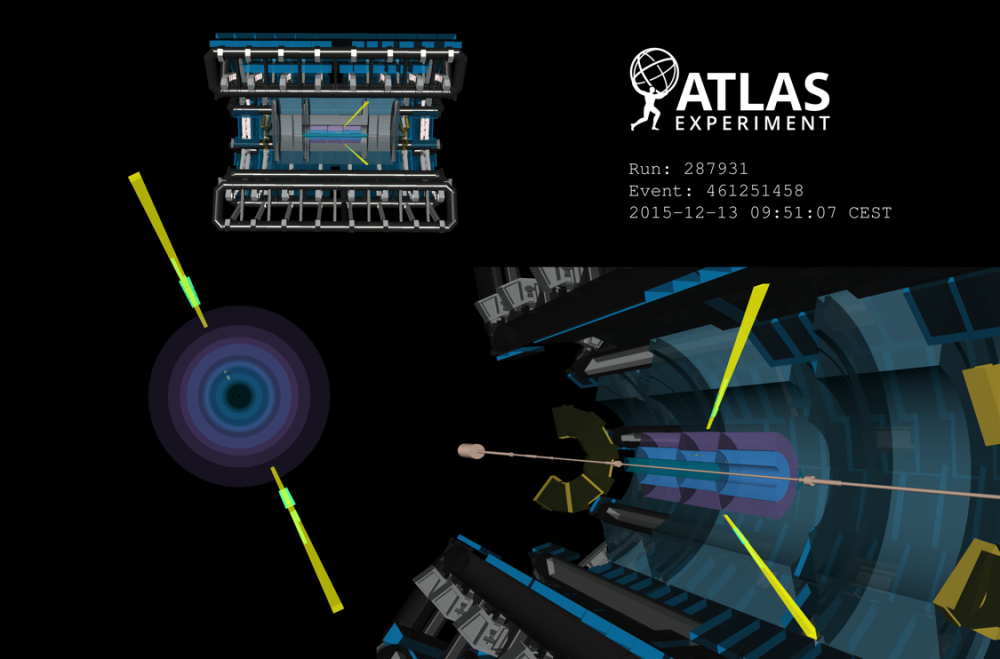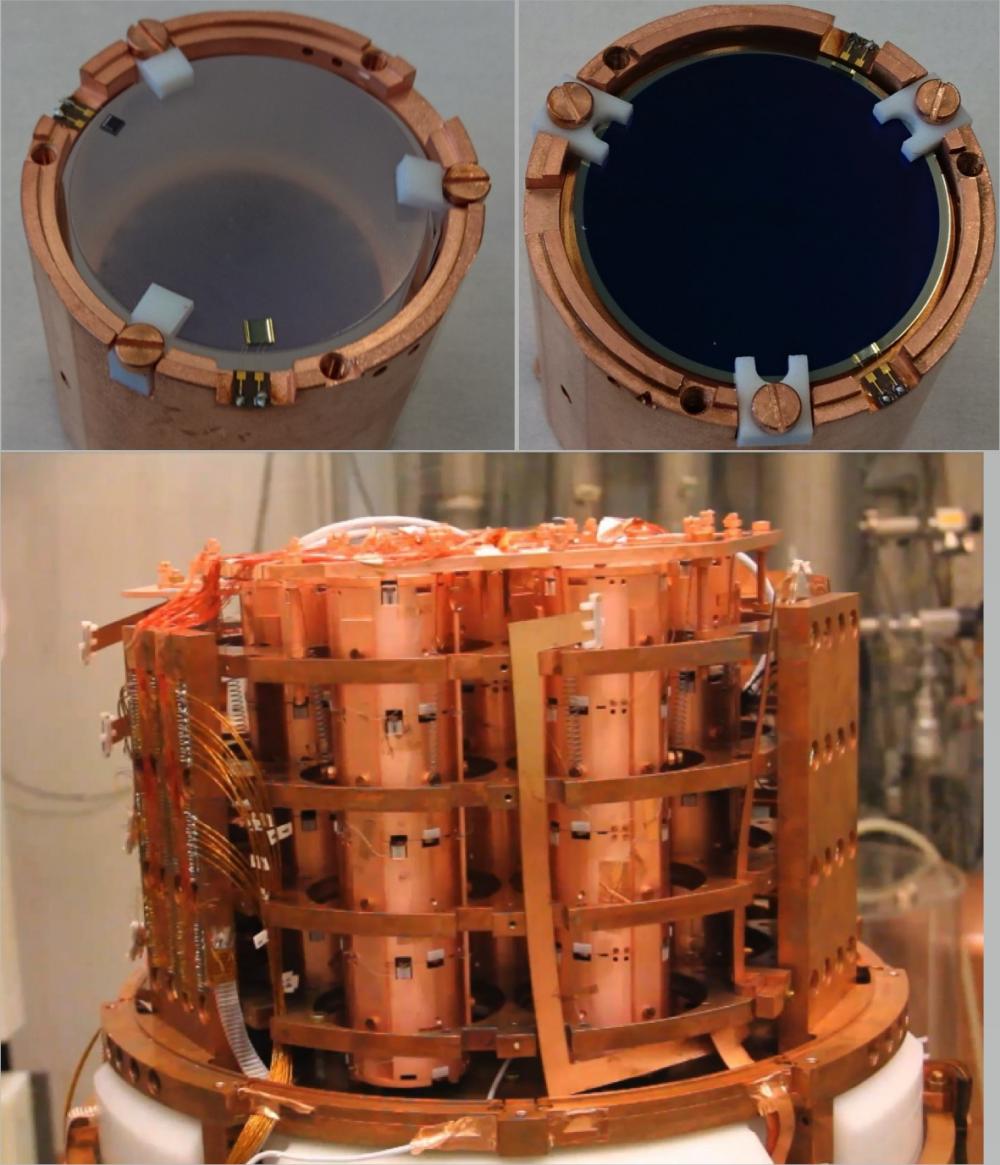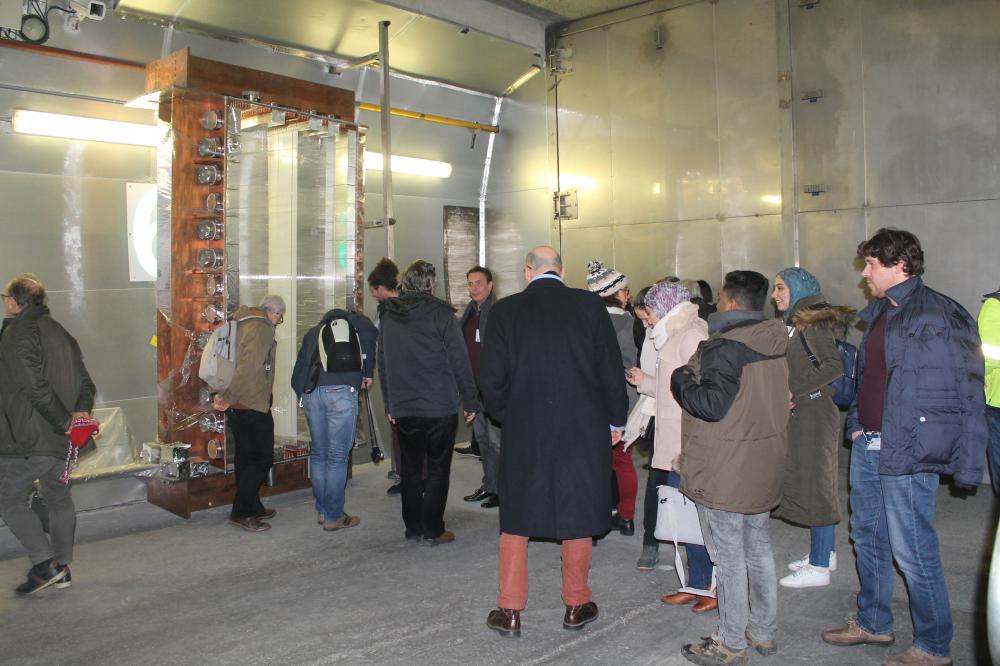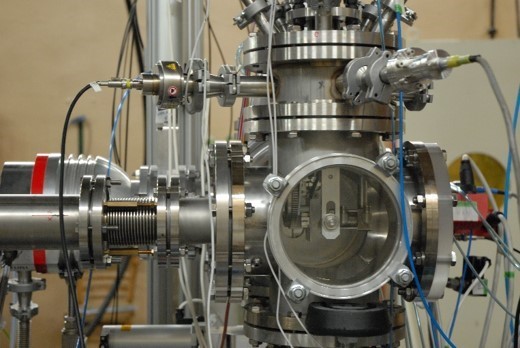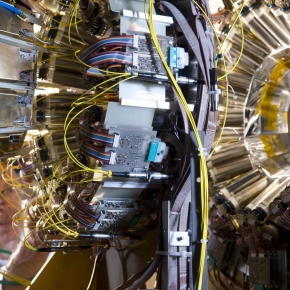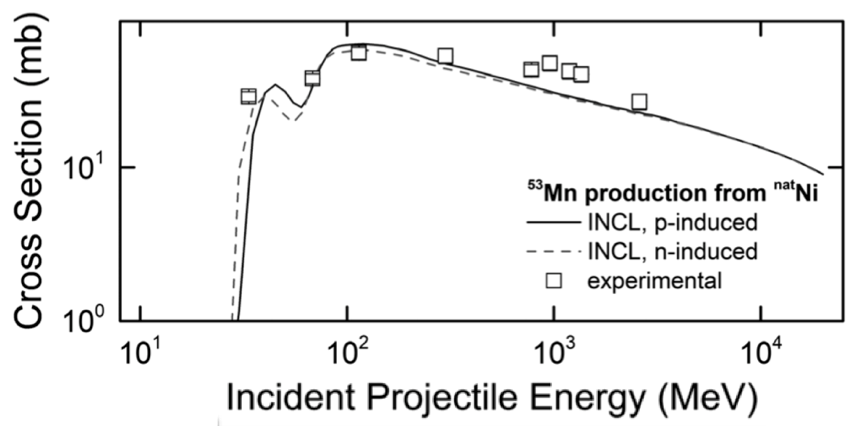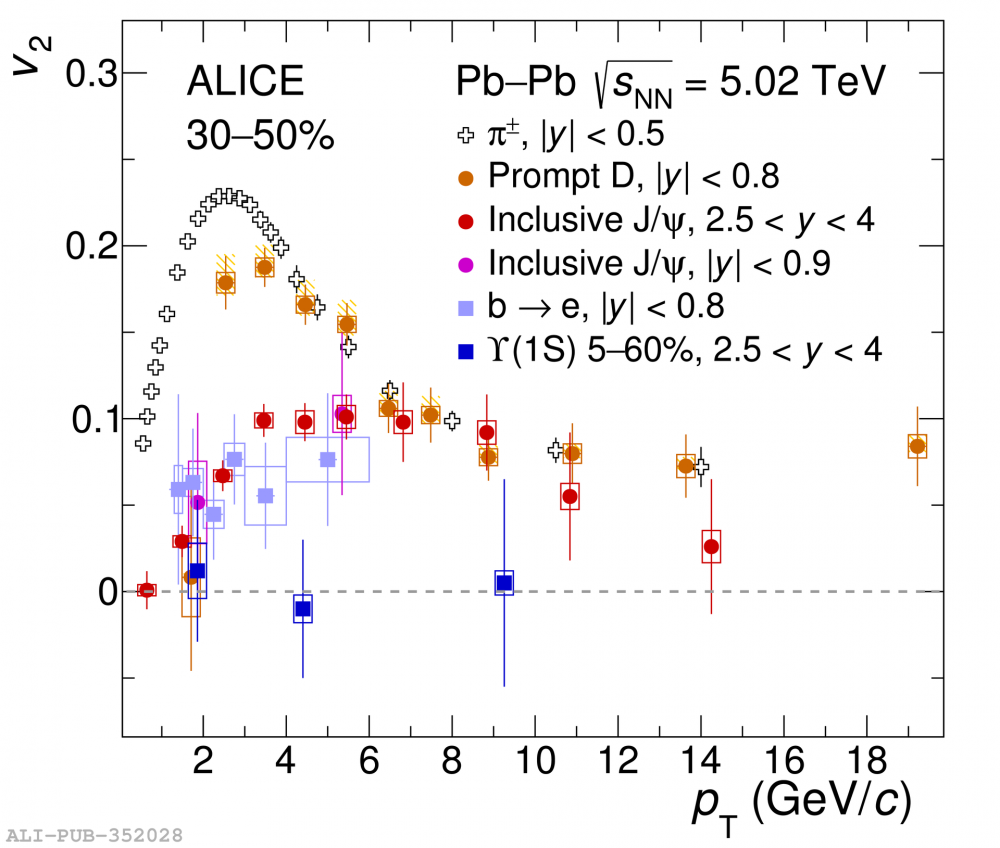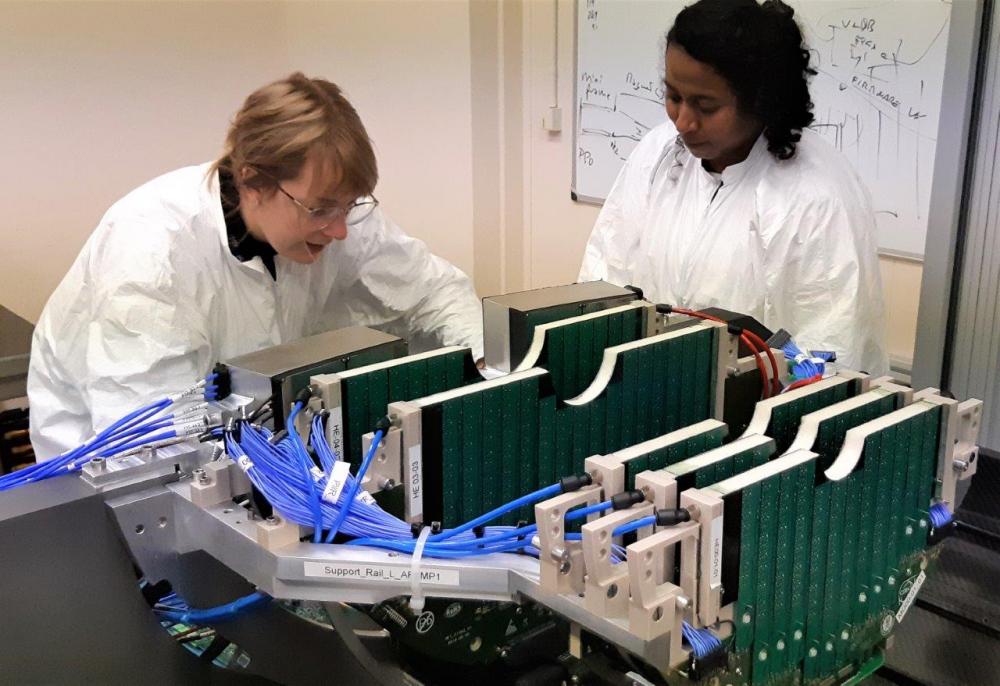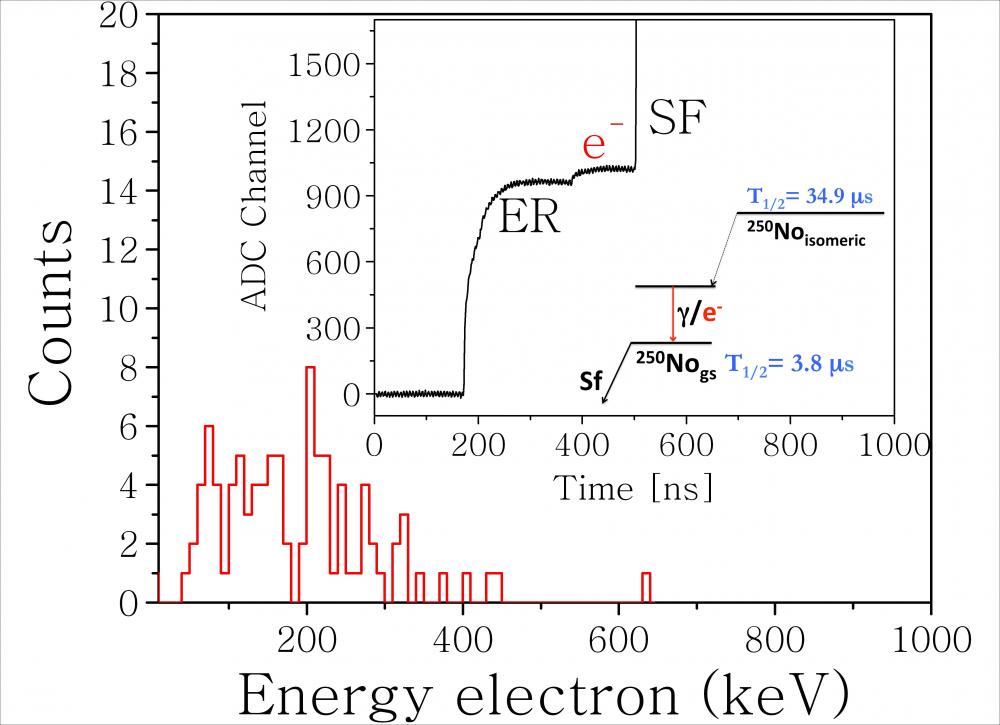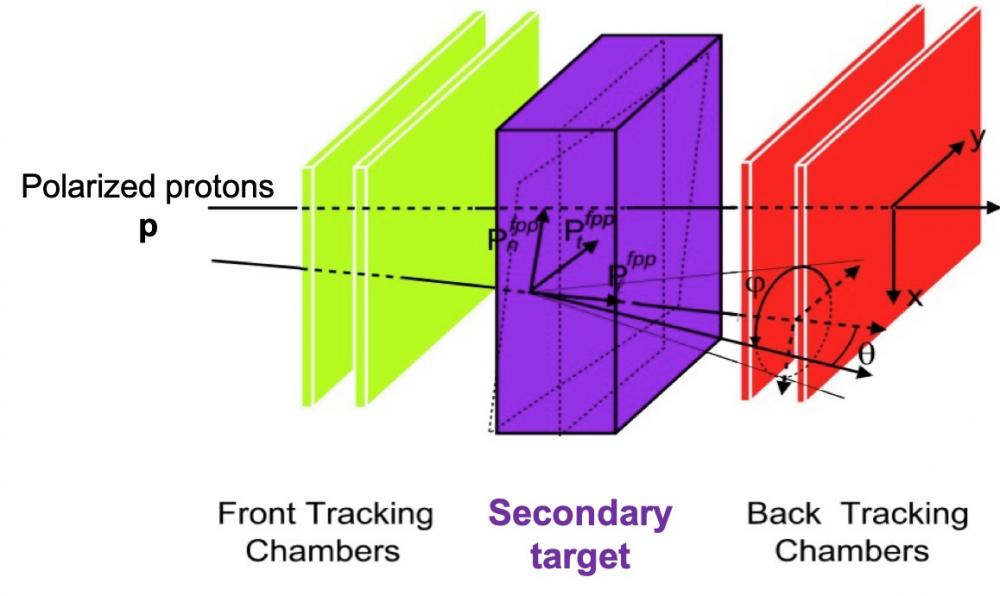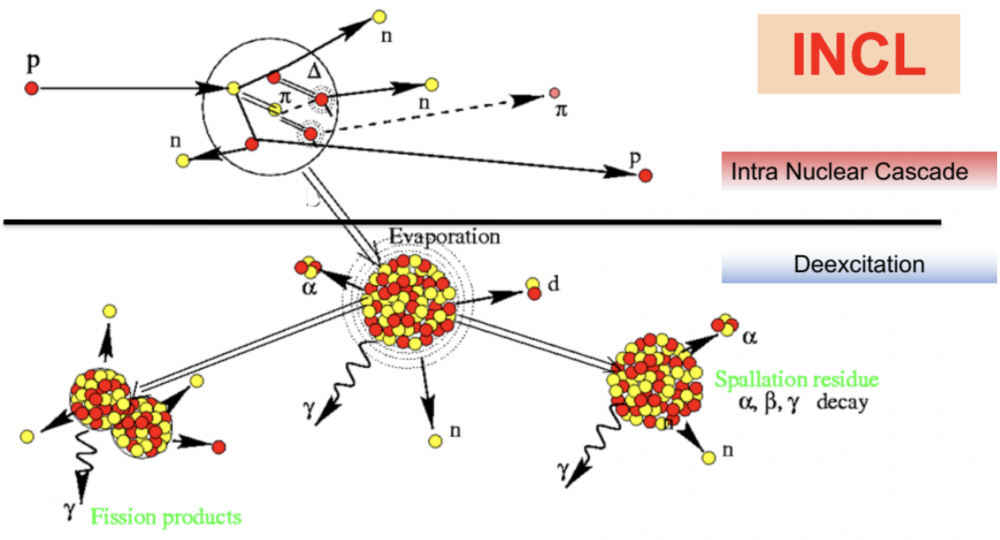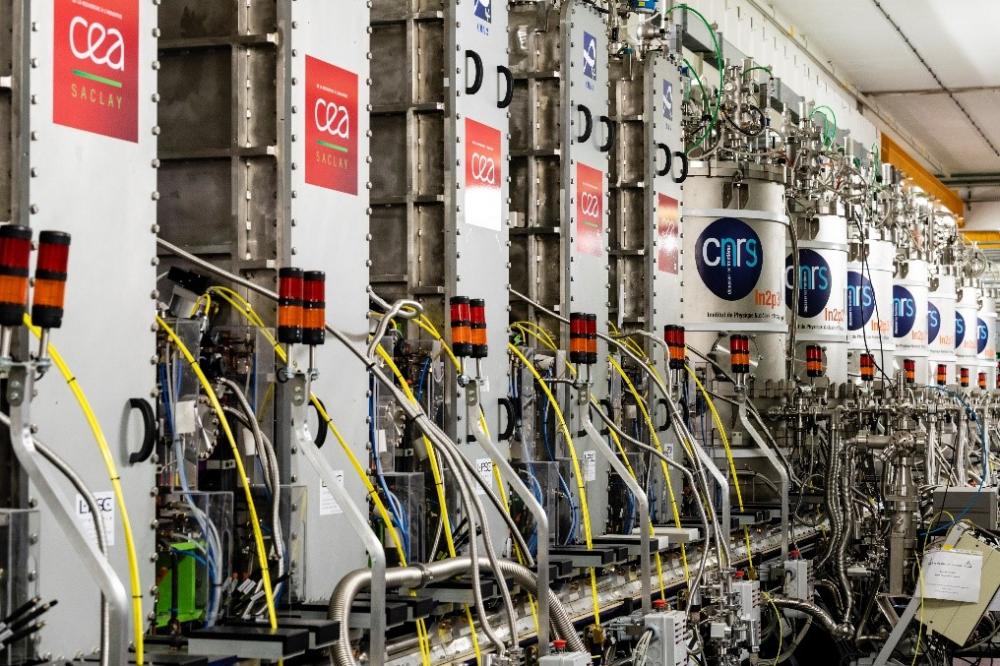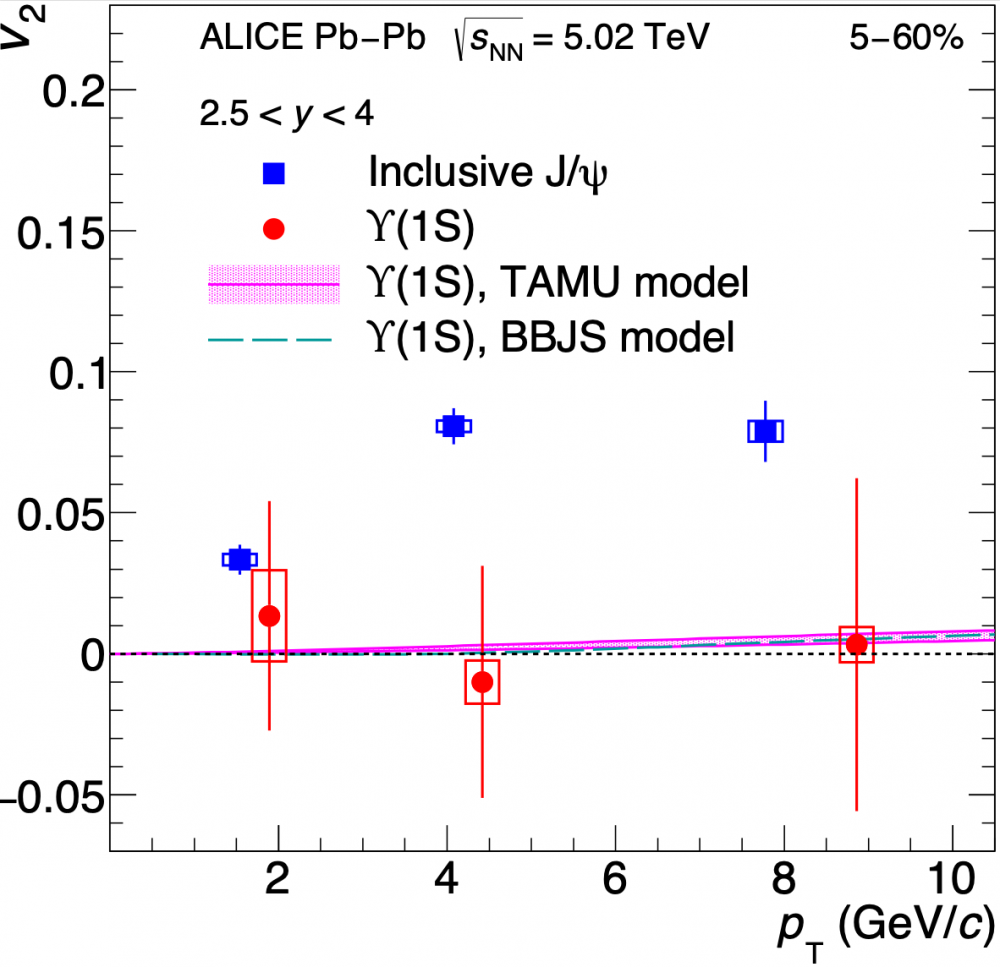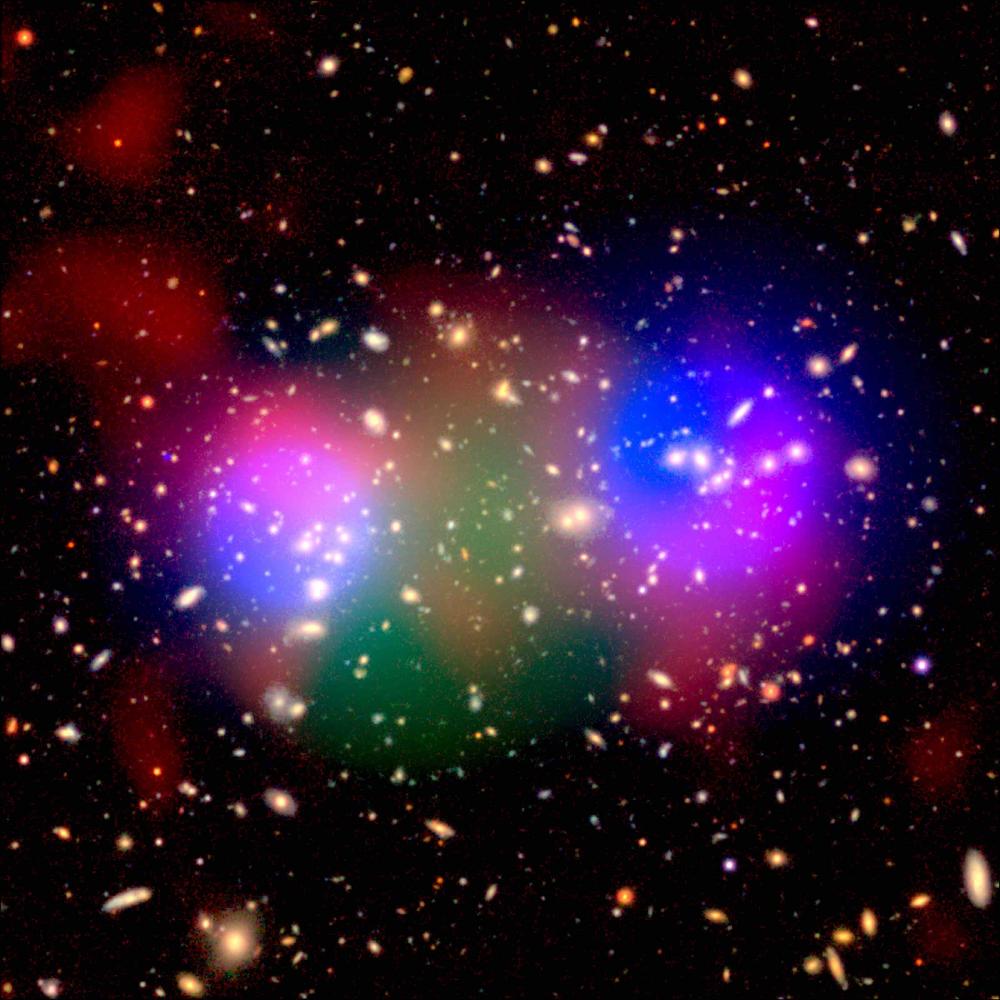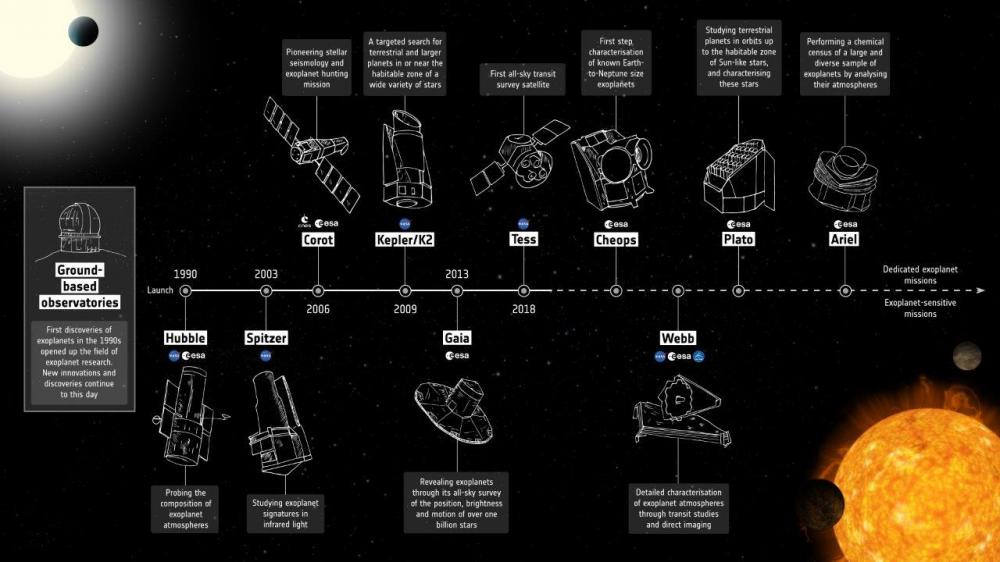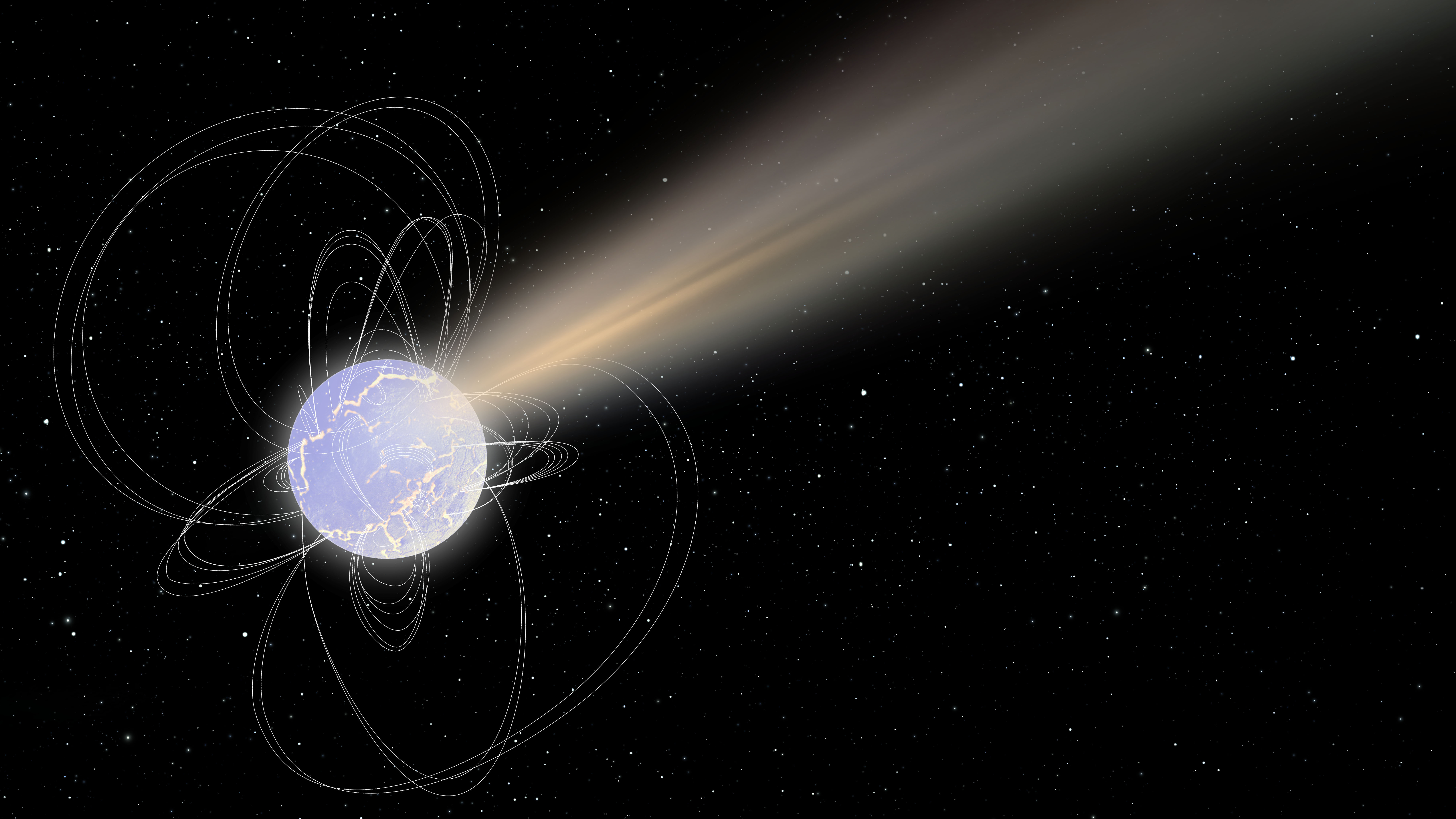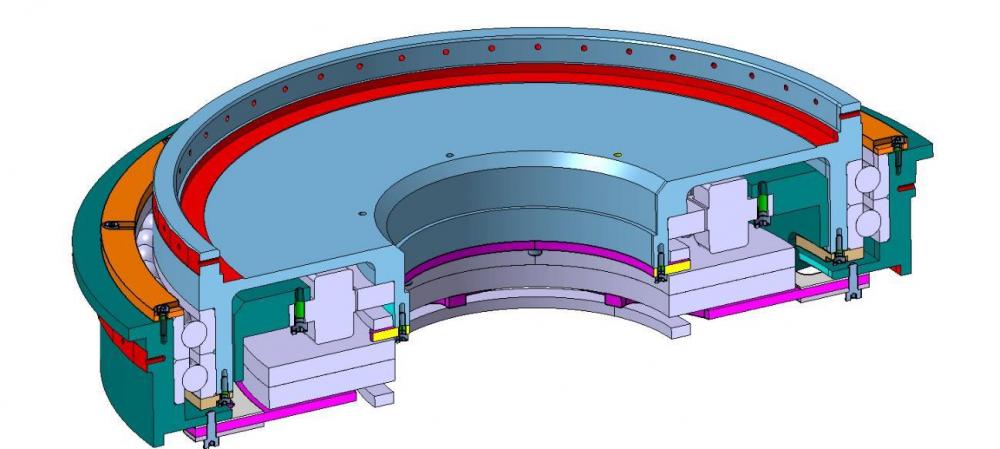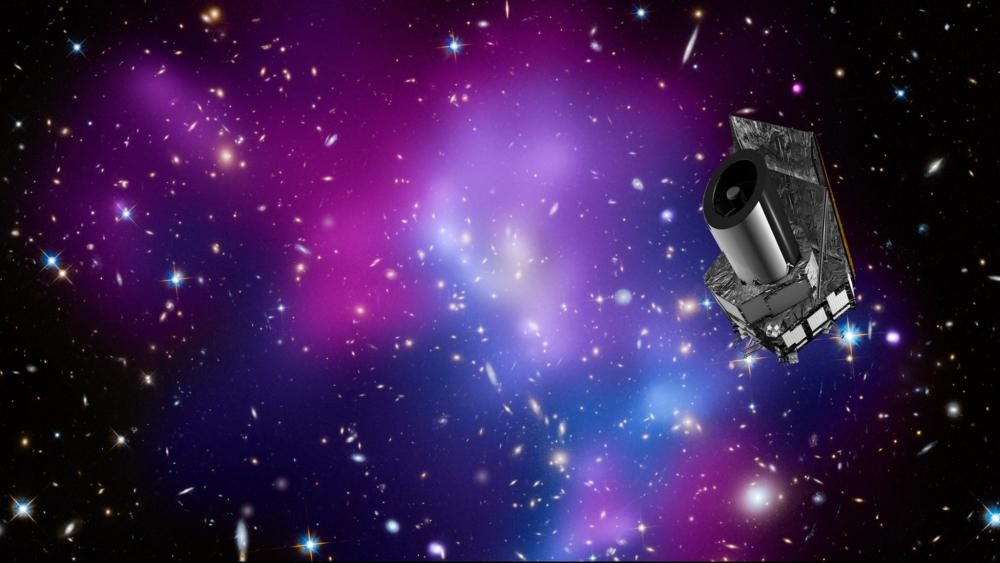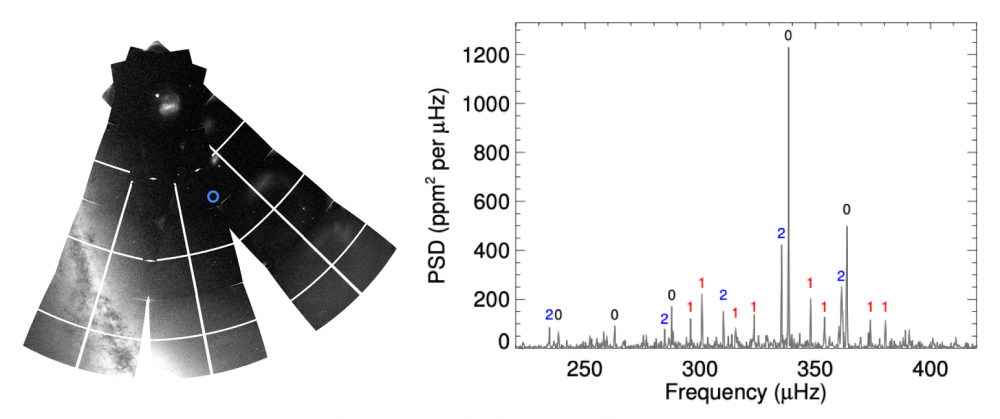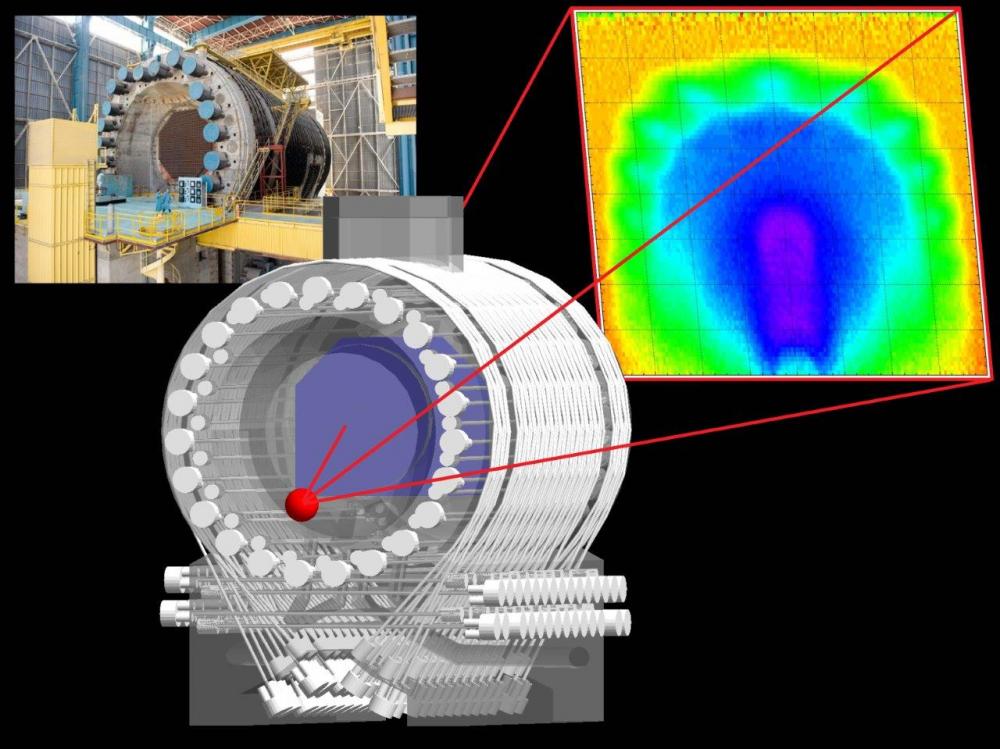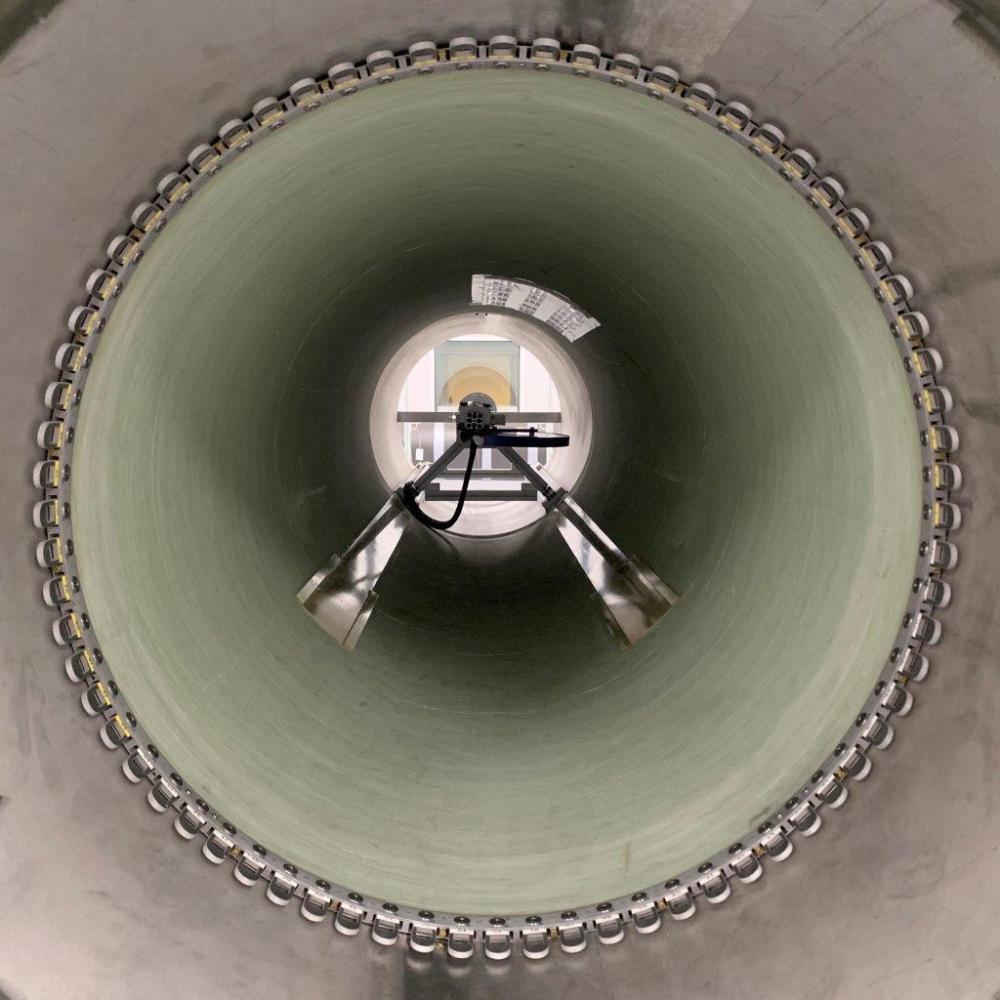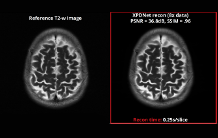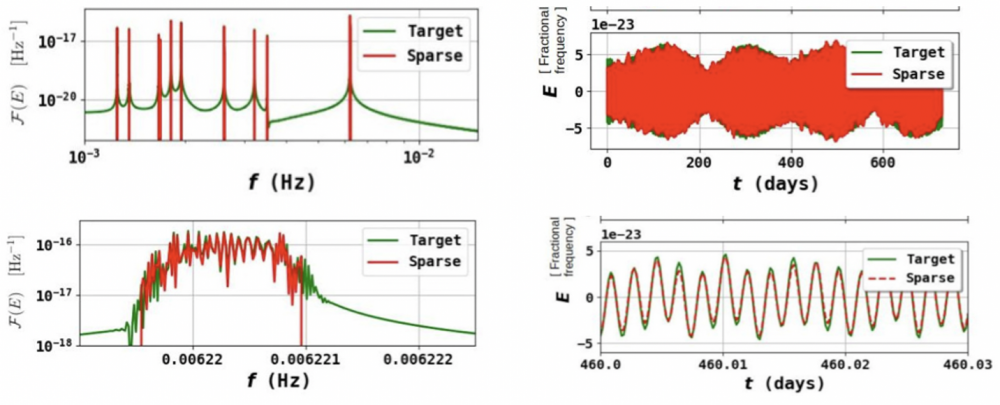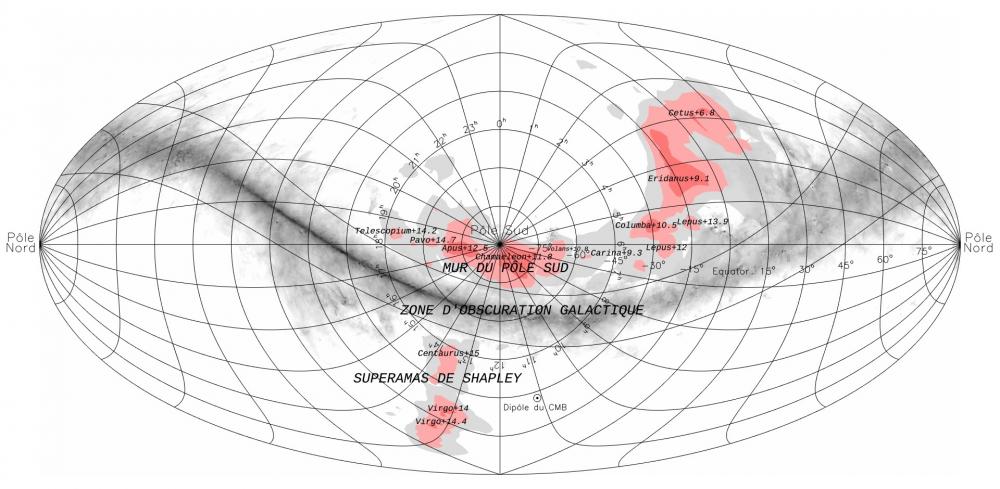The main objective of the KATRIN experiment is the measurement of the mass of the three neutrinos of the Standard Model of Particle Physics. But the analysis of the beta decay spectrum of tritium also allows to search for the trace of a hypothetical fourth neutrino, called sterile neutrino. The collaboration has just published its first analysis in Physical Review Letters (see article) based on four weeks of data acquired in 2019. There is no trace of this fourth neutrino, but this is only the beginning as sensitivity will rapidly improve. The KATRIN spectrometer shows a strong potential to study this possible new facet of the neutrino.
The CMS collaboration presented its most achieved measurement of the Higgs boson properties in the two-photon decay channel at the ICHEP conference in August 2020. The results are based on the complete LHC Run 2 data recorded between 2016 and 2018 and show a level of accuracy never achieved before.
Thanks to this increased sample size, to sophisticated analysis methods using artificial intelligence and developed in part by the CMS group at IRFU, previously unimaginable measurements are now possible: the study of rare modes of production becomes possible. This painstaking work has made it possible to carry out increasingly precise measurements of the properties of the Higgs boson, making it possible to test the Standard Model of particle physics ever further. The latter has once again triumphed in this confrontation.
But with the restart of the LHC collider in 2022, and then its luminosity increase in 2027, the amount of data will be significantly larger, allowing the Standard Model to be examined from every angle.
Photon-photon elastic scattering is a very rare phenomenon in which two real photons interact producing a new real photon pair. The direct observation of this process at high energy, impossible during decades, was done by ATLAS [1] and CMS [2] experiment at CERN between 2016 and 2019. These successes have led the two collaborations to strengthen their involvement in this new field, leading to a new measurement, currently being published by the ATLAS experiment [3]. Presented for the first time at the LHCP conference in May 2020, the new idea is to use photon collisions to search for a hypothetical axion-like particle. As with the first publications on the subject, IRFU members are at the origin of the ideas at work in the analyses carried out at CERN.
In its standard form, double beta decay is a process in which a nucleus decays into a different nucleus and emits two electrons and two antineutrinos (2νββ). This nuclear transition is very rare, but it was detected in several nuclei with sophisticated experiments. If neutrinos are their own antiparticles, it’s possible that the antineutrinos emitted during double beta decay annihilate one another and disappear. This is called neutrinoless double beta decay (0νββ), a phenomenon never observed so far. If 0νββ is detected, we will ascertain that neutrinos are their own antiparticles, and this would be a clue as to why they get their tiny masses—and whether they played a part in the existence of our matter-dominated universe.
The CUPID-Mo experiment, installed at the Modane Underground Laboratory, after one year of data between March 2019 and April 2020 has just set a new global limit for the detection of the signature 0νββ.
The international CUPID-Mo experiment conducted by French laboratories of IN2P3, CEA/IRFU and CEA/IRAMIS has been testing the use of Molybdenum-based crystals since last April to detect double beta decay without neutrino emission. The experiment is gradually gaining strength and already shows a near-zero background in the region of interest, which is very promising. The scientists of the collaboration made an update in the occasion of the official inauguration on 11 and 12 December 2019.
In December 2019, the NFS (Neutrons For Science) facility received its first proton beams, delivered by the linear accelerator of the new Spiral2 facility at the GANIL. On the fringes of the progressive commissioning of the accelerator in 2020, short beam periods were used to successfully test several NFS components. The first experiments are planned at the facility in the fall of 2021.
A first beam of protons accelerated up to 33 MeV was sent in December 2019 to the NFS irradiation station (Figure 1), coupled to a pneumatic transfer system aiming at transporting the irradiated samples to a measurement station. The production cross-sections of different nuclei (obtained through irradiation of iron and copper samples) were thus measured. The results of this test are in agreement with previously published data. The irradiation and measuring device, built and operated by physicists from the NPI laboratory in Rez (Czech Republic), will be used in the future for novel measurements of reaction cross sections by activation.
Thanks to the GANIL accelerated heavy ion collisions and the detection of reaction products with the INDRA detector, it was possible to deduce the evolution parameters of chemical elements in stellar phenomena.
These chemical elements, light nuclei (d, t, 3He, α, 6He…), are created by aggregation of protons and neutrons during the collision between the projectile nucleus and the target nucleus. The measurement with INDRA has shown that their production rate is higher than the rate expected by the ideal gas model. The work of the INDRA collaboration, with the help of three theorists, consisted in performing a Bayesian analysis on the data to extract the thermodynamic observables taking into account the effects of the nuclear matter environment and then comparing the data thus obtained with a model.
This result is important since it measures the chemical concentration of aggregates in areas of low nuclear density, the same densities found in nuclear collapse supernovae. The process of this stellar event is largely dominated by the emission of neutrinos that can be captured by free neutrons or present in the aggregates. Thus the chemical concentration of these elements determines the neutrino transport and thus the evolution of the supernova.
The spectroscopy of a mendelevium isotope, 251Md composed of 101 protons and 150 neutrons, reveals a surprise: when it rotates, it behaves exactly like a lawrencium isotope made of 103 protons and 152 neutrons. The experiment carried out at the University of Jyväskylä in Finland required the most advanced tools to study these rare and ephemeral nuclei: filtering and identification of the nuclei, gamma ray and electron detection. Is this completely unexpected similarity the result of chance, or is it related to the properties of strong interaction? The investigation continued with the theoreticians to try to understand this singularity. The results have just been published in the journal Physical Review C.
Meteorites are bombarded throughout their journey by cosmic radiation. This cosmic ray exposure (CRE) is a formidable footprint of their history, provided of course that we know how to decipher it. The interaction of cosmic radiation with the atomic nuclei constituting the meteorite will produce so-called cosmogenic isotopes, very often radioactive. Measurements of activities, once the meteorite is found on earth, associated with a model can allow us to go back to its pre-atmospheric size, its CRE ages, its terrestrial age, and even to better understand this cosmic ray flux. This type of model is based on a key ingredient: the elementary cross sections of isotope production. For the first time, these have been provided only by the INCL nuclear reaction code developed at Irfu in the framework of a study of iron meteorites [1], thus increasing the precision of the analyses.
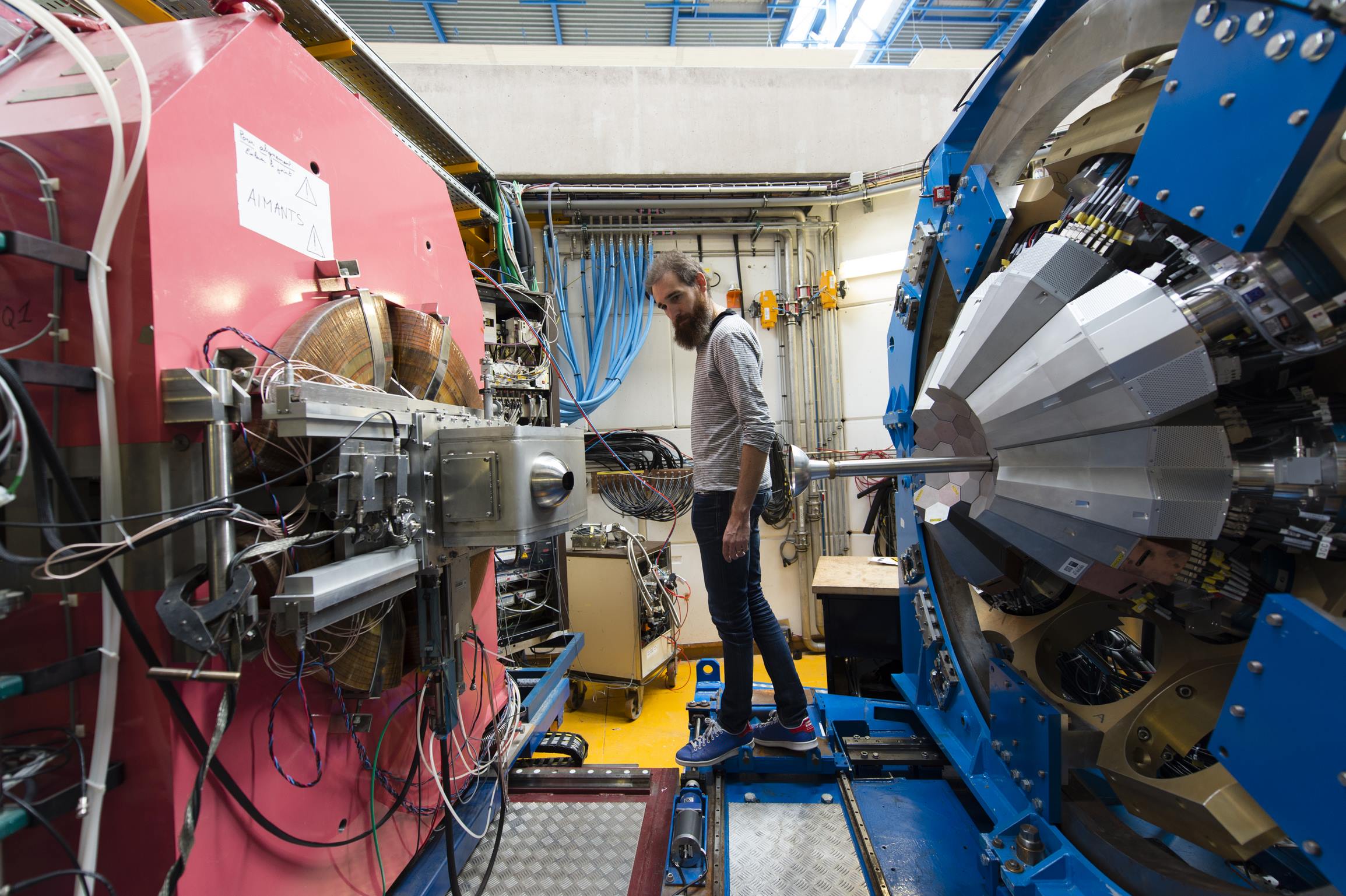
and the VAMOS spectrometer [left] showed that the
balance between the two contributions was more
complex than previously envisaged.
The complexity of the atomic nucleus reflects a multi-component character of the « nuclear force » that holds protons and neutrons together. Proper separation and characterization of each of these components represents a challenge for both theoretical and experimental nuclear structure studies. The tin isotopes (nuclei with Z=50 protons and a number of neutrons depending on the isotope) provide ideal opportunities to study the competition between two of the nuclear force components: the so-called pairing, related to the marked tendency of protons and neutrons to form pairs in the nuclear matter, and the so-called quadrupole interaction term, describing the natural susceptibility of nuclei to adopt deformed shapes. Though of a different nature, these two interaction terms contribute to the goal of achieving an optimum organization of nucleons in the atomic nucleus that will minimize its energy. Previous works have demonstrated that a shift of balance between these two components takes place when approaching tin-100, and this observation provided important constraints for theoretical descriptions of this so-called “doubly-magic” nucleus. Having the same numbers of protons and neutrons (Z=N=50), 100Sn is a key nucleus to validate model descriptions of exotic nuclei.
The 2020 edition of the Large Hadron Collider Physics Conference (LHCP) took place from 25 to 30 May 2020. Due to the COVID-19 pandemic, the conference, originally planned to be hosted in Paris, was held entirely online. The ALICE collaboration presented new results showing how charmed particles - those containing quarks, the elementary components of matter, known as c - can act as "messengers" for the plasma of quarks and gluons, which is believed to have existed in the primordial Universe and can be recreated during heavy ion collisions in the Large Hadron Collider (LHC). By studying the charmed particles, scientists can learn more about hadrons, particles in which quarks are bound together by gluons, and about quark-gluon plasma, a state of matter in which quarks and gluons are not confined within hadrons. These new results are the result of an analysis conducted as part of a thesis currently underway at the DPhN.
After more than four years of research and development, design and manufacturing work, the MFT (Muon Forward Tracker), a new detector that will equip the ALICE experiment at the LHC, has seen its construction finalized and is currently under commissioning at CERN. In order to limit as far as possible the amount of material crossed by the particles, the conception of this detector has required the development of many innovative techniques and procedures, particularly in the integration of silicon sensors on flexible hybrid circuits called ladders, for which Irfu was responsible within the project. It took two years to manufacture the 500 ladders of the MFT, and a very long sequence of operations was the subject of numerous studies under the responsibility of the Irfu Antenna team at CERN. The production of these ladders has just been successfully completed and it is therefore time to make a short assessment
The simple question “Where does the Periodic Table end?” has excited scientific interest for a long time. In this context, understanding the structure of the heaviest nuclei, and through it their stability, is of major importance. A decade ago, there was no promising path to tackle this scientific quest. And yet, in the past few years, a collaboration composed of physicists coming from Irfu/DPhN, Jyvaskyla (Finland), GSI (Germany) and Argonne (USA) applied a newly developed technique relying on high performance accelerators and state-of-the-art detectors to investigate the isomeric (long-lived) states in heavy nuclei[KS1] [2] . It has triggered a renaissance in heavy ion elements science. New focal plane detectors equipped with digital electronics has been for the first time extended to short-lived states[KS3] in heavy nuclei, allowing the detection of very close events and very short half-life (few µs). This opens new perspectives as to date, the heaviest element found is Oganesson with a half-life of 0.58ms.The results have been published in the Physical review C [1].
Nucleons (protons and neutrons), the components of the atomic nucleus, can be polarized. This means that their spins are preferentially aligned along a quantization axis. The spin is a quantum property of a particle and has its classical analogue in a spinning top. The strong interaction that acts among nucleons in the atomic nucleus is sensitive to the polarization. Therefore, for a better understanding of the strong interaction, it may be interesting to measure the polarization of the particles produced in a nuclear reaction. The devices to measure the polarization are called polarimeters. Conceiving, building, testing and validating polarimeters requires proton and neutron polarized beams, of known polarization. Today, such beams of energy in the GeV range are available only at the Nuclotron complex of JINR, Dubna, in Russia. In order to optimize neutron and proton polarimetry at energies of few GeV, analyzing powers have been measured with Nuclotron beams on different targets: Carbone, mylar, paraffine, as well as on a heavier target, cupper, for beam momenta in the range 3 – 4.2 GeV/c. The present work indicates that high-energy polarimetry shows specific characteristics, opening the way to innovative experimental approaches. These results have been published in EPJA, as ‘Special article’, section ‘New Tools and Methods’ [1].
INCL (Liège intranuclear cascade) is a simulation code known for its ability to model light particle-nucleus interactions. It is used in very various fields, such as proton therapy, neutron sources, radioactive ion beams or ADS's (Accelerator Driven Systems). In order to extend its capabilities in the field of higher energy reactions, in connection with cosmic rays or with the study of hypernuclei, a team of physicists led by Irfu has recently developed a new version of the code involving strange particles. This work was at the heart of a recently defended thesis (2019) and the new possibilities offered by this code were published in early 2020 in the journal Physical Review C [1].
Following SPIRAL2's commissioning authorization issued by the French Nuclear Safety Authority (ASN) on July 8, 2019, many crucial steps were successfully completed by the end of 2019. A first proton beam was accelerated to 33 MeV, the nominal energy by the SPIRAL2 linear accelerator (LINAC) and a first test experiment was achieved the Neutron For Science (NFS) experimental room.
These first results in 2019 are very promising. They will continue in 2020 with the increase in beam power up to 10% of the maximum design power. In parallel test experiments in NFS will be carried out.
A few microseconds after the Big Bang the Univers may have gone through a deconfined state of quarks and gluons, the Quark–Gluon Plasma (QGP). The QGP can be recreated in high-energy heavy-ion collisions. In particular at the LHC at CERN, the QGP behaves like a fluid. All particles, light, strange, or charmed flow collectively as if being carried by the same fluid, proving the strength of the interactions between QGP constituents. The ALICE Collaboration at the LHC, with decisive contributions from the Irfu teams, has just published, in the prestigious Physical Review Letters journal, the first measurement of the elliptic flow of Υ(1S) (a particle composed of a beauty quark and its antiquark). This resonance appears as the first particle at the LHC not flowing with the fluid. This pioneering result opens up the path for deeper studies of the QGP.
Three major observatories (Subaru, GBT and XMM-Newton) have joined their forces to observe the collision of a pair of galaxy clusters, HSC J023336-053022 (XLSSC 105), located four billion light years away. The spectacular image resulting from the data taken by the Subaru telescope in the visible, the Green Bank Telescope in radio and finally the X-ray satellite XMM-Newton (a space facility intensively used by the Astrophysical Department / AIM Laboratory of CEA Paris-Saclay in particular with its XMM-XXL program), shows that the violence of the shock heats the gas located between the clusters to more than 400 million degrees. It also allows indirect mapping of the dark matter present in the system. This was work was published in the September 2020 issue of the MNRAS journal.
See : the ESA press release
ESA has adopted Ariel (Atmospheric Remote-sensing Infrared Exoplanet Large-survey), the 4th medium-class space mission of its Cosmic Vision program. Ariel is expected to be launched in 2029 by Ariane 6 from the Guiana Space Centre in Kourou. The French team, composed of CNES, CEA and CNRS, has taken charge of the design, production and delivery of the AIRS spectrometer. Pierre Olivier Lagage, astrophysicist at Irfu, is one of the 2 co-PI for the ARIEL consortium; the other co-PI is Jean-Philippe Beaulieu from IAP.
An international campaign including ground-based and space telescopes, including the INTEGRAL satellite, discovered end of April 2020 very short pulses in both X-rays and radio waves coming from a compact object in the Galaxy, the magnetar SGR 1935+2154. The simultaneous observation of these signals is seen for the first time in this type of source and attests a connection between magnetars and Fast radio bursts, a class of radio sources whose origin is today poorly known. This work, that includes researchers from the Astrophysics Department/ AIM Laboratory of CEA-Irfu of Paris-Saclay, is published in The Astrophysical Journal Letters and subject press release of a European Space Agency (ESA).
The Sloan Digital Sky Survey (SDSS) published in July a complete analysis of the largest three-dimensional map of the Universe ever created, reconstructing the history of its expansion over a period of 11 billion years.
On May 18th 2020, ESO formally closed the preliminary design review of the ELT/METIS thermal infrared instrument. Following this important milestone, the instrument enters into the final design phase (phase C) in which the its design will be frozen just before its building.
To measure cosmological parameters, the Euclid space telescope will use two main probes: gravitational lensing (Weak Gravitational Lensing) and galaxy distribution (Galaxy Clustering). These measurements will allow us to study dark energy and dark matter, which affect the growth of cosmic structures and the accelerated expansion of the Universe.
In addition to its implications on instrumental developments and data processing, Irfu is actively involved in the development of algorithms needed to prepare the extraction of cosmological parameters that will be derived from Euclid measurements.
Coordinated by Valeria Pettorino, physicist at Irfu's CosmoStat laboratory, in collaboration with Tom Kitching (UCL[1]) and Ariel Sanchez (MPE[2]), an international team from the Euclid collaboration with complementary expertise in theory and observation has just completed a 3-year study characterizing the performances expected from Euclid for these observational probes.
Publication an Arxiv: https://arxiv.org/pdf/1910.09273.pdf
[1] University College London ; [2] Max Planck Institute for extraterrestrial physics
ν Indi is a bright star (visual magnitude mv = 5.3) visible with the naked-eye from the southern hemisphere. By using ground data (ESO telescopes), space data (Gaia and Tess missions) and by combining very diverse spectroscopic, astrometric, kinematic or asteroseismological information, an international team including two researchers from the Department of Astrophysics / AIM Laboratory of CEA-Saclay was able to determine the epoch, between 11.6 and 13.2 billion years ago, of a collision between our galaxy and a small dwarf galaxy, Gaia-Enceladus. This work is published in the journal Nature Astronomy, January 2020.
The main objective of the KATRIN experiment is the measurement of the mass of the three neutrinos of the Standard Model of Particle Physics. But the analysis of the beta decay spectrum of tritium also allows to search for the trace of a hypothetical fourth neutrino, called sterile neutrino. The collaboration has just published its first analysis in Physical Review Letters (see article) based on four weeks of data acquired in 2019. There is no trace of this fourth neutrino, but this is only the beginning as sensitivity will rapidly improve. The KATRIN spectrometer shows a strong potential to study this possible new facet of the neutrino.
Within the framework of a collaborative project between the DES/DDSD and the DRF/IRFU, a feasibility study of muography potential for the auscultation of nuclear reactors was initiated in 2017. After an initial evaluation phase carried out by IRFU using numerical modelling, first data were taken on the G2 reactor block, located at CEA Marcoule and shut down in the early 1980s, from February 2020. These measurements demonstrated the potential of the technique, identifying differences between the current structure of the G2 reactor and the 3D model created from the original plans of the installation. These initial results demonstrate the interest of using muography in the clean-up and dismantling of nuclear facilities, one of the CEA's priorities nowadays. For the next phase of the project, a 3D tomography of the reactor is envisaged by combining images taken from different positions. It could be the first 3D image of the interior of a reactor at dismantling phase without using any artificial ionizing radiation. This will provide a new inspection tool to the existing palette.
In order for the images produced by the future MRI to be free of distortions or artifacts, the magnetic field generated by the Iseult magnet must be homogeneous to 0.5 PPM (parts per million) around the patient's brain. To meet this challenging specification, it was necessary to provision means of "shimming" the field, i.e. of correcting all the small defects that would inevitably arise from the manufacturing process. 5904 pieces of shim (small iron platelets) were screwed onto rails and installed inside the magnet tunnel. This first configuration was tested on Thursday, July 9, 2020 by mapping its effect on the magnetic field of Iseult at 3 T. The results are very encouraging as this first shimming iteration allowed to increase the homogeneity of the field in the useful zone from 138.8 to 3.2 PPM (value extrapolated to 11.72 T from magnetic measurements at 3 T).
After more than four years of research and development, design and manufacturing work, the MFT (Muon Forward Tracker), a new detector that will equip the ALICE experiment at the LHC, has seen its construction finalized and is currently under commissioning at CERN. In order to limit as far as possible the amount of material crossed by the particles, the conception of this detector has required the development of many innovative techniques and procedures, particularly in the integration of silicon sensors on flexible hybrid circuits called ladders, for which Irfu was responsible within the project. It took two years to manufacture the 500 ladders of the MFT, and a very long sequence of operations was the subject of numerous studies under the responsibility of the Irfu Antenna team at CERN. The production of these ladders has just been successfully completed and it is therefore time to make a short assessment
In the field of artificial intelligence, international competition is tough. So when researchers from CEA-Joliot and CEA-IRFU challenge start-ups and other companies specializing in AI, we cheer them on. Here’s a success story from the field of MRI reconstruction.
In 2016, the announcement of the first direct detection of gravitational waves opened a new window of observation to probe our universe in a new way. The LISA (Laser Interferometer Space Antenna) space observatory promoted by ESA (European Space Agency) will allow the direct detection of gravitational waves undetectable by terrestrial interferometers. Its launch is planned by ESA in 2034 and many current works are exploring its scientific potential, in particular through the LISA Data Challenges aimed at exploiting realistic pseudo-data. Researchers from DEDIP and DPHN at IRFU have recently developed new methods for the detection of gravitational waves inspired by similar problems in image processing applied to astrophysics. These methods were successfully used in the last LISA Data Challenge. This work, published in the journal Physical Review D [1], opens the way to many other studies and is the result of a transverse approach combining physics and signal processing.
That's one wall the White Walkers won't cross. An international collaboration bringing together the IRFU (Université Paris-Saclay), the Astronomy Institute of the University of Hawaii, the LPC (Université Clermont Auvergne), the IP2I (Université Claude Bernard de Lyon), and the Racah Institute of Physics (Hebrew University of Jerusalem), has discovered an immense structure in the distribution of galaxies, called the "South Pole Wall".
Thanks to a method based on the velocity fields of galaxies, this region of the sky, previously unknown because it is masked by molecular clouds and dust located in the foreground of our galaxy, brings a new piece to the puzzle of the cosmic web of our nearby Universe. This cosmic web consists of nodes connected by filaments, separating voids. Galaxies are pulled from the voids to the filaments and then to the gravitational attractors located at the nodes of the web. The filaments, sandwiched between the voids, can take a flattened shape to form walls.
The South Pole Wall has a huge rectilinear section (220 Mpc) at the ends of which it curves to follow the Laniakea border.
These works are published in APJ journal https://doi.org/10.3847/1538-4357/ab9952
GANIL is commissioning its new superconducting linear accelerator (LINAC - Figure 1). This high-power accelerator provides GANIL with new possibilities in terms of beams for nuclear physics research. By providing beams with an intensity of up to 5 mA (3x1016 particles per second), the new SPIRAL2 (2nd generation on-line radioactive ion production system) LINAC will enable the GANIL's various scientific and technical programs to cross new frontiers.
A year and a half after the delivery of the prototype cryomodule (CM00) to ESS, the first production medium beta cryomodule (CM01) has now arrived at the ESS site. It left CEA on September 22, 2020 for a two-day trip to Lund, Sweden. The Irfu teams had previously validated the RF and cryogenic performances of this cryomodule. It will be tested again on the ESS test bench before being integrated in its final position in the accelerator tunnel. This is a first step. Starting next year, ESS will receive an average of one cryomodule per month for 3 years.
On October 28, 2014, CEA signed a contract with the Israeli research center in Soreq (SNRC) for the construction of a accelerator called SARAF (SOREQ Applied Research Accelerator Facility) by IRFU teams. This agreement is materialized by preliminary and detailed study phases over a period of 18 months (2015 and 2016) opening up to a construction, testing and installation phase on the site that will last 6 years.
The aim is to build a superconducting linear accelerator capable of providing proton and deuteron beams of variable energy between 5 and 40 MeV with an intensity of up to 5mA. This facility is intended for fundamental and applied research in many fields.
The schedule, associated with this project, includes successively the delivery and installation on site and then the testing of three sub-assemblies:
- The medium energy line, MEBT (in 2020),
- The first cryomodule (in 2021),
- The three remaining cryomodules (in 2022
In order for the images produced by the future MRI to be free of distortions or artifacts, the magnetic field generated by the Iseult magnet must be homogeneous to 0.5 PPM (parts per million) around the patient's brain. To meet this challenging specification, it was necessary to provision means of "shimming" the field, i.e. of correcting all the small defects that would inevitably arise from the manufacturing process. 5904 pieces of shim (small iron platelets) were screwed onto rails and installed inside the magnet tunnel. This first configuration was tested on Thursday, July 9, 2020 by mapping its effect on the magnetic field of Iseult at 3 T. The results are very encouraging as this first shimming iteration allowed to increase the homogeneity of the field in the useful zone from 138.8 to 3.2 PPM (value extrapolated to 11.72 T from magnetic measurements at 3 T).
The EUPRAXIA project has just completed its design study phase with the delivery of the Conceptual Design Report (CDR) at the end of 2019. The strong involvement of IRFU, particularly in the field of particle beam physics, has made it possible to show that solutions exist for the realization of a plasma wakefield accelerator, with a beam quality approaching that of conventional accelerators.
Detailed studies of the physical mechanisms involved have efficiently guided the numerical simulations, each lasting more than 10 hours on 2048 computing nodes, to demonstrate that all the objectives on the output beam can be achieved with a plasma of 30 cm long, 1.1017 cm-3 electronic density and a laser of 400 terawatts power, 50 joules energy. Innovative methods have been developed for accelerating and driving the beam through the two plasma stages to the end user without degrading the beam. A first analysis of error tolerances allowed to identify the most sensitive components to which particular care should be taken during the fabrication and implementation.
Within the framework of a collaborative project between the DES/DDSD and the DRF/IRFU, a feasibility study of muography potential for the auscultation of nuclear reactors was initiated in 2017. After an initial evaluation phase carried out by IRFU using numerical modelling, first data were taken on the G2 reactor block, located at CEA Marcoule and shut down in the early 1980s, from February 2020. These measurements demonstrated the potential of the technique, identifying differences between the current structure of the G2 reactor and the 3D model created from the original plans of the installation. These initial results demonstrate the interest of using muography in the clean-up and dismantling of nuclear facilities, one of the CEA's priorities nowadays. For the next phase of the project, a 3D tomography of the reactor is envisaged by combining images taken from different positions. It could be the first 3D image of the interior of a reactor at dismantling phase without using any artificial ionizing radiation. This will provide a new inspection tool to the existing palette.
In order for the images produced by the future MRI to be free of distortions or artifacts, the magnetic field generated by the Iseult magnet must be homogeneous to 0.5 PPM (parts per million) around the patient's brain. To meet this challenging specification, it was necessary to provision means of "shimming" the field, i.e. of correcting all the small defects that would inevitably arise from the manufacturing process. 5904 pieces of shim (small iron platelets) were screwed onto rails and installed inside the magnet tunnel. This first configuration was tested on Thursday, July 9, 2020 by mapping its effect on the magnetic field of Iseult at 3 T. The results are very encouraging as this first shimming iteration allowed to increase the homogeneity of the field in the useful zone from 138.8 to 3.2 PPM (value extrapolated to 11.72 T from magnetic measurements at 3 T).
On October 28, 2014, CEA signed a contract with the Israeli research center in Soreq (SNRC) for the construction of a accelerator called SARAF (SOREQ Applied Research Accelerator Facility) by IRFU teams. This agreement is materialized by preliminary and detailed study phases over a period of 18 months (2015 and 2016) opening up to a construction, testing and installation phase on the site that will last 6 years.
The aim is to build a superconducting linear accelerator capable of providing proton and deuteron beams of variable energy between 5 and 40 MeV with an intensity of up to 5mA. This facility is intended for fundamental and applied research in many fields.
The schedule, associated with this project, includes successively the delivery and installation on site and then the testing of three sub-assemblies:
- The medium energy line, MEBT (in 2020),
- The first cryomodule (in 2021),
- The three remaining cryomodules (in 2022
After more than four years of research and development, design and manufacturing work, the MFT (Muon Forward Tracker), a new detector that will equip the ALICE experiment at the LHC, has seen its construction finalized and is currently under commissioning at CERN. In order to limit as far as possible the amount of material crossed by the particles, the conception of this detector has required the development of many innovative techniques and procedures, particularly in the integration of silicon sensors on flexible hybrid circuits called ladders, for which Irfu was responsible within the project. It took two years to manufacture the 500 ladders of the MFT, and a very long sequence of operations was the subject of numerous studies under the responsibility of the Irfu Antenna team at CERN. The production of these ladders has just been successfully completed and it is therefore time to make a short assessment


